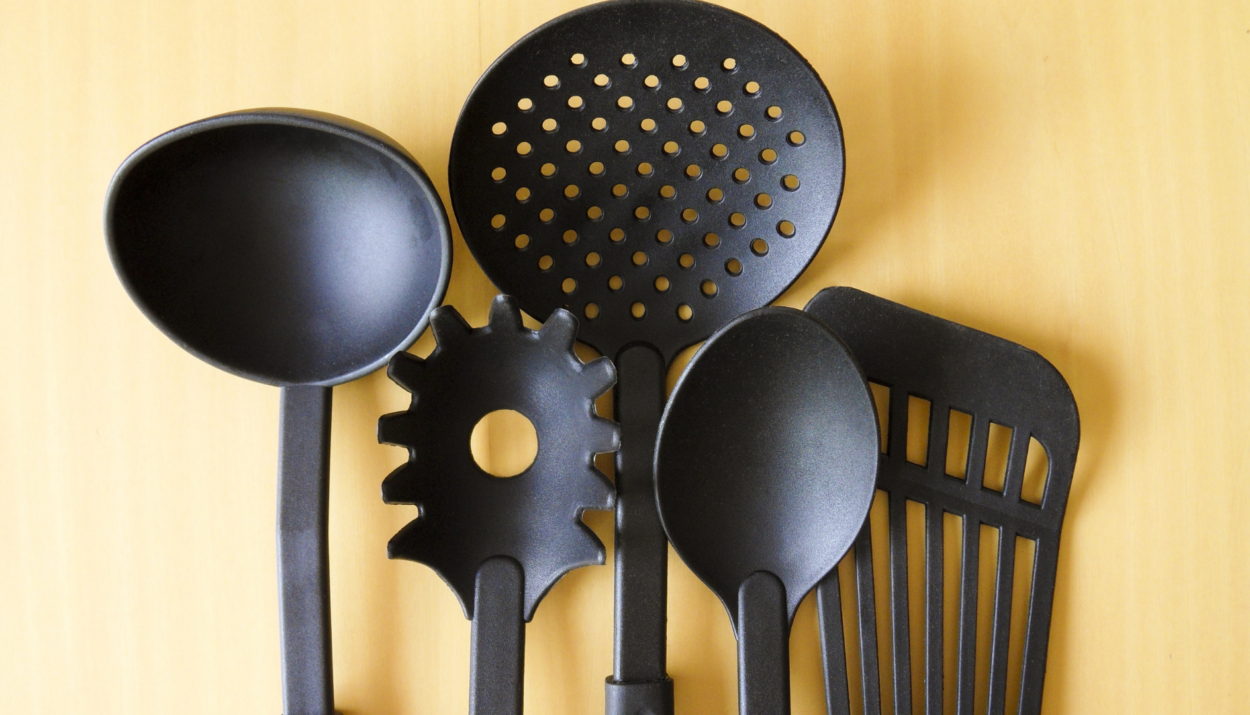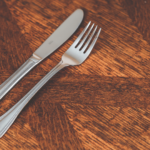Plastic cookware and utensils are popular in many kitchens because they are affordable, versatile, and convenient. However, many people are worried about the safety of using plastic for cooking and storing food. There are concerns that harmful chemicals could be released and pose health risks. This blog will explore the use of plastic in kitchen tools, the different types of plastics used in cookware, safety concerns related to plastic cookware, and alternatives available to consumers. By the end, you’ll have a better understanding of the risks and options for safer cooking and food storage.
Plastic in Cookware
The use of plastic in kitchen utensils and bakeware has seen a significant rise in recent years. From spatulas and whisks to baking pans and food storage containers, plastic products have become an integral part of our cooking and food prep routines. While plastic offers advantages, such as affordability and ease of use, it’s important to be aware of the potential risks and health concerns associated with these products. Understanding the types of plastics used in cookware and their implications is crucial for making informed decisions about the safety of your kitchen tools.
The rise of plastic in kitchen utensils and bakeware
The prevalence of plastic in kitchen utensils has sparked interest in non-toxic alternatives, driven by health and safety concerns. Plastic utensils and bakeware may contain harmful chemicals, including endocrine disruptors, raising awareness about health risks. The search for safer options is fueled by the potential presence of toxic substances in plastic products, prompting a shift towards non-toxic alternatives such as silicone utensils and stainless steel cookware. Consumers are increasingly seeking heat-resistant and durable options to avoid exposure to harmful chemicals from plastic utensils and storage containers. As the demand for safer options grows, the use of synthetic materials in food storage containers and kitchen tools is being reevaluated, emphasizing the need for healthier and more sustainable alternatives.
The different types of plastics used in cookware
Plastic cookware and utensils can be made from various types of plastics, and the type of plastic used can influence their safety and potential risks. Some common types of plastics used in cookware include polypropylene, PVC, and BPA. Polypropylene is a widely used plastic known for its heat resistance and durability, making it suitable for food storage containers and microwave-safe utensils. PVC, on the other hand, is often used in the production of plastic wrap and can release harmful chemicals when exposed to heat. BPA, a chemical found in some plastics, including polycarbonate, has been the subject of health concerns and is often avoided in cookware and food containers labeled as “BPA-free.” Understanding the different types of plastics in cookware is essential for making informed choices and ensuring the safety of your kitchen tools and bakeware.
The Safety Concerns with Plastic Cookware
While plastic cookware and utensils offer convenience and affordability, there are valid safety concerns associated with their use. Plastic cooking utensils, in particular, can pose health risks due to the potential release of harmful chemicals when exposed to high temperatures. There is also the myth of “BPA-Free” plastic, where labels can be misleading, and other harmful chemicals may still be present. Additionally, plastic cookware and utensils can contain heavy metals and flame retardants, which can leach into food and have adverse health effects. It’s important to understand and address these safety concerns to ensure the well-being of ourselves and our families.
Health risks associated with plastic cooking utensils
Plastic cooking utensils, when exposed to high temperatures, can release harmful chemicals and pose health risks. These utensils can contain plastic additives, such as phthalates and bisphenol, which can act as endocrine disruptors. Continuous exposure to these chemicals can lead to health issues, including hormonal imbalances, developmental disorders, and reproductive problems. When heating food in the microwave or using plastic utensils for high-temperature cooking, there is a greater risk of ingesting toxic substances from the utensils. It’s important to be cautious of the potential health risks associated with plastic cooking utensils and consider safer alternatives that do not pose such risks.
The myth of “BPA-Free” plastic
Many plastic cooking utensils and bakeware products are marketed as “BPA-Free,” leading consumers to believe that they are safe and free from harmful chemicals. However, the absence of BPA does not guarantee the absence of other harmful substances in the plastic. Some manufacturers substitute BPA with chemicals such as BPS (bisphenol S) or other bisphenol compounds, which can have similar health risks. These chemicals can still leach into food and beverages when exposed to heat or certain food types. It is important for consumers to be aware of the limitations of “BPA-Free” labels and consider alternatives that are made from safer materials to reduce the potential health risks associated with plastic cookware and utensils.
The presence of heavy metals and flame retardants in plastic
In addition to harmful chemicals, plastic cookware and utensils can also contain heavy metals and flame retardants, which pose health risks when they leach into food. Flame retardants are commonly used in plastics to prevent or reduce fire hazards, and heavy metals can be present in plastic additives or dyes. When exposed to heat, these substances can migrate from the plastic and contaminate food and beverages. The ingestion of heavy metals, such as lead and chromium, can have detrimental effects on health, especially in the long term. PVC, a type of plastic known for its flexibility, can contain toxic additives and should be avoided in cookware and food storage containers. Considering the potential presence of heavy metals and flame retardants in plastic cookware, it is important to explore safer alternatives for cooking and food storage.
Alternatives to Plastic Cookware
Given the safety concerns associated with plastic cookware, it’s essential to explore alternative options that prioritize health and food safety. Fortunately, there are several materials that can be used as safer alternatives to plastic in cooking utensils and bakeware. Silicone cookware, stainless steel, and wooden utensils are gaining popularity for their non-toxic properties and durability. These alternatives offer advantages like heat resistance, nonstick surfaces, and non-reactivity with food. By choosing non-toxic cookware, you can minimize the risks associated with plastic and make safer choices for you and your family.
The benefits of silicone cookware
Silicone cookware provides a nonstick surface without the health risks associated with plastic, as it is heat resistant and does not leach harmful chemicals into food. Its durability and flexibility make it a practical and non-toxic choice, offering a safer option for cooking and food storage. By using silicone cookware, concerns about the leaching of toxic substances into food are eliminated, ensuring food safety. The nonstick properties and heat resistance of silicone cookware make it a desirable and safer alternative to plastic products. Silicone cookware’s ability to withstand extreme temperatures makes it suitable for various cooking needs, providing a more reliable and healthier option for consumers.
Stainless steel – a safer alternative
When considering the safety of cooking utensils, stainless steel emerges as a durable and non-reactive option for food storage containers. Its non-toxic nature makes it an ideal choice for health-conscious consumers. Stainless steel cookware minimizes the risks associated with harmful chemicals leaching from synthetic materials, including plastics. Additionally, it is resistant to extreme temperatures and does not release toxic substances when heating food or storing leftovers. The advantages of stainless steel as a safer option for cooking and food safety cannot be overstated, especially when compared to plastic alternatives.
Wood and bamboo utensils – why they are non-toxic
Wood and bamboo utensils offer a non-toxic and eco-friendly alternative to plastic cooking utensils. Their non-toxic properties make them safe for food preparation and cooking, providing numerous benefits. These utensils are non-reactive and do not release harmful chemicals into food, addressing the health risks associated with plastic cooking utensils. Opting for wood and bamboo utensils eliminates concerns about the presence of toxic substances in food. The durability and versatility of wood and bamboo utensils make them a practical choice for any kitchen, offering a safer and healthier option for food preparation and cooking.
Pros and Cons of Silicone Cookware
While silicone cookware offers several advantages over plastic, it’s important to consider the pros and cons of using silicone in the kitchen. Let’s explore some of the key points:
Why silicone is considered safer than plastic
Silicone cookware is highly regarded as safer than plastic because of its non-toxic and non-leaching properties, making it a preferred choice for health-conscious consumers. Unlike traditional plastic cookware, silicone is heat resistant and nonstick, offering a safer option for cooking and food storage. Its non-toxic nature eliminates the risk of harmful chemicals leaching into food, addressing concerns related to the use of plastic containers and utensils. Silicone products provide a durable and practical alternative to plastic, ensuring food safety while withstanding extreme temperatures in various cooking applications and food storage containers.
FDA’s position on silicone cookware
The Food and Drug Administration (FDA) in the United States has deemed silicone cookware safe for food use. The FDA has established that food-grade silicone is non-toxic, heat resistant, and dishwasher safe. Silicone is considered an inert material, meaning it does not react with food and does not release harmful chemicals when exposed to heat. This recognition from the FDA further supports the safety and suitability of silicone cookware for cooking, baking, and food storage. By following the FDA guidelines and using high-quality food-grade silicone products, you can have peace of mind knowing that your silicone utensils and cookware are safe and suitable for use in the kitchen.
Practical Aspects of Replacing Plastic Utensils
Now that we have explored the safety concerns and alternatives to plastic utensils, let’s consider the practical aspects of replacing plastic in your kitchen.
How to wisely choose non-toxic cooking utensils
When selecting non-toxic cooking utensils, consider opting for wooden spoons to avoid harmful chemicals found in plastic utensils. Silicone utensils are another excellent choice due to their non-toxic nature and heat resistance, making them suitable for use at high temperatures. When it comes to nonstick cookware, look for utensils made of silicone or nylon that won’t scratch the nonstick surface. Bamboo utensils are also a safe and durable option for cooking. To prioritize food safety, it’s best to avoid plastic utensils altogether and instead choose silicone, stainless steel, or wooden utensils. By making these choices, you can ensure that your kitchen tools are free from harmful chemicals and synthetic materials, promoting a safer cooking environment.
The cost aspect – is it worth spending more?
Investing in non-toxic cooking utensils is a wise choice for long-term health benefits. Consider the durability of silicone and stainless steel options, which can be cost-effective due to their long lifespan. Prioritize health and safety when evaluating the cost of non-toxic kitchen tools.
The environmental impact of replacing plastic with other materials
In addition to health concerns, the environmental impact of plastic is a growing concern. Plastic waste, including bags and food storage containers, contributes to pollution and has adverse effects on the environment. Choosing non-toxic alternatives to plastic can help reduce our carbon footprint and promote sustainability. By opting for materials like silicone, stainless steel, and wood, we can minimize plastic waste and support eco-friendly practices in the kitchen. The next time you reach for a plastic utensil or container, consider the environmental impact and make the switch to non-toxic alternatives for the benefit of the planet and future generations.
The Future of Cooking Utensils and Bakeware
As awareness of the health risks of plastic increases, the future of cooking utensils and bakeware is shifting towards non-toxic and sustainable materials. Consumers are seeking safer alternatives to plastic and are embracing materials like silicone and stainless steel for their kitchen tools. These non-toxic and durable options are becoming the new standard in cooking utensils and bakeware, ensuring safer and healthier cooking experiences. The kitchen of the future will prioritize non-toxic and sustainable cookware, promoting the well-being of individuals and the environment.
Is there a future for plastic in the kitchen?
While plastic cooking utensils and bakeware have been widely used, the future of the kitchen is moving away from plastic and towards non-toxic and environmentally friendly options. With the growing awareness of health risks and the push for sustainability, plastic utensils face significant challenges in the market. Consumers are seeking safer and more durable alternatives, such as silicone, stainless steel, and wood, which offer health benefits and contribute to a greener kitchen environment. As the demand for non-plastic utensils and cookware continues to rise, the future of the kitchen is being shaped by the need for safer, healthier, and more sustainable options.
Frequently Asked Questions
Are there any health risks associated with using plastic cooking utensils or bakeware?
Yes, there are health risks associated with using plastic cooking utensils and bakeware. Plastic products can contain harmful chemicals, such as BPA and phthalates, which can leach into food and beverages. Continuous exposure to these chemicals can lead to hormonal imbalances, developmental disorders, and reproductive problems. To minimize the risk, choose high-quality BPA-free plastic or consider using alternative materials such as glass, stainless steel, or silicone. Regularly inspect plastic utensils and bakeware for cracks, discoloration, or signs of wear and replace them if necessary.
How can I properly care for and maintain my plastic cooking utensils and bakeware?
To ensure the longevity of your plastic cooking utensils and bakeware, follow the manufacturer’s instructions for cleaning and maintenance. Avoid using abrasive sponges or harsh chemicals that can damage the plastic. Additionally, do not expose them to high heat and replace any items that show signs of wear and tear.
Are there any specific types of plastic that are safer to use in the kitchen?
When it comes to plastic in the kitchen, there are some types that are considered safer. Look for BPA-free plastics labeled as “food grade” or “FDA-approved.” However, it’s still a good idea to avoid using plastic utensils and bakeware at high temperatures. Consider alternative materials like silicone, stainless steel, or glass for cooking and baking.
Conclusion
It’s important to be mindful of the materials we use in our cookware and utensils. Plastic ones may have harmful chemicals like BPA and heavy metals which can cause health problems. “BPA-Free” options may still not be safe. Keep an eye out for non-toxic alternatives like silicone, stainless steel, wood or bamboo utensils as they are safer. Silicone cookware is durable and heat resistant hence popular nowadays. When choosing non-toxic utensils, consider factors like cost, environmental impact and proper care. Making informed choices will ensure our safety in the kitchen.



